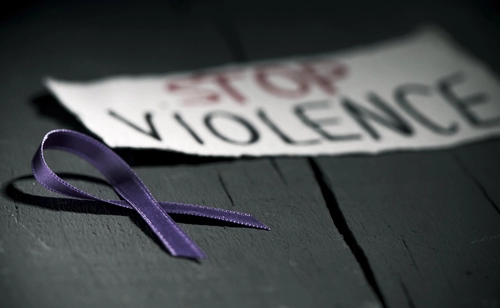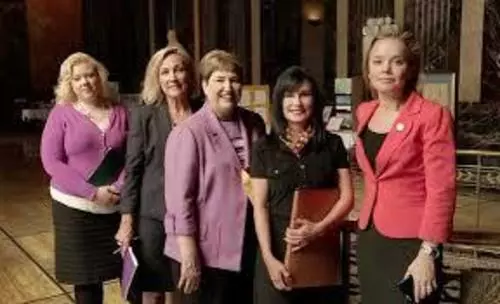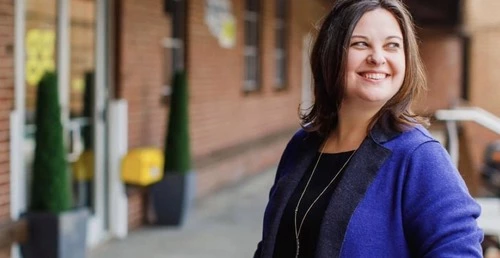1. Select a discrete app icon.

notes
What's Working for Survivors?
Author Sara Shoener says the system in place to help victims of domestic violence is ‘incredibly imperfect’
- May 26, 2017

Author Sara Shoener spent five years in three different communities interviewing 31 women between who were either currently with an abusive partner or who had recently escaped one. Her goal: Figure out which types of services in these communities were helping these survivors and which ones were falling short. She compiled her findings into her just-released book, The Price of Safety: Hidden Costs and Unintended Consequences for Women in the Domestic Violence Service System.
Shoener was enrolled in a doctoral program at Columbia University studying public health strategies for preventing violence against women when she became interested in finding out why the rate of domestic violence wasn’t dropping as much as she thought it should.
“We’re 40 to 50 years into this wave of service [for survivors] and we’re not really seeing the numbers go down,” says Shoener.
The Bureau of Justice may disagree, however. A 2014 report revealed the incidents of nonfatal domestic violence declined 63 percent since 1994, from 13.5 victimizations per 1,000 people over age 12 in that year to 5 victimizations per 1,000 individuals in 2012.
The report took into account rape, sexual assaults, robberies and aggravated and simple assaults by intimate partners, immediate family members and other relatives.
However, despite statistics, advocates reported they didn’t notice a decline in the number of victims stepping forward. The National Network to End Domestic Violence (NNEDV) reported in 2015 that 88 percent of their programs experienced an increase in the number of people asking for help.
She Found One Group of Survivors Is Most Helped
During her research, Shoener split her time between a very small town, a midsize city and a large urban center, all east of the Mississippi River. She kept the exact locations concealed to protect survivors she interviewed, the names of whom she also changed. The differences in each place surprised her, she says.
Among her conclusions: Overall, domestic violence services benefit the privileged.
“When things fell apart for survivors, systems in place seemed to be set up for survivors who had existing resources—money, time, mental and emotional stamina.” The court system is by and large perplexing for most, demanding survivors miss work or secure childcare at all hours of the day to attend.
“Survivors have complex, busy lives that have nothing to do with the violence they’re experiencing,” says Shoener. “Asking them to dedicate even more resources—taking time off work, potentially experiencing more trauma, dedicating mental strength—it’s a lot.” Her proposed solution: Why not create systems that don’t require more from victims?
Donate and change a life
Your support gives hope and help to victims of domestic violence every day.
“It means making sure that courts are open at flexible times so that people who have childcare needs can get to them. It means labor laws that make sure survivors can get time off using sick leave to tend to what they need to as it relates to violence.”
Small Town vs. Big City Services
The next surprise? Shoener found survivors in small towns seemed to be thriving more than those in large cities.
“I had always assumed, should I need services related to domestic violence, there would be … more resources in an urban area, like Manhattan, where I live. And, in some ways, that’s true. If I were looking for an attorney or a very concrete resource, it’s probably more likely I could get access to it here.”
But the places where survivors of domestic violence seemed to be treated the most personally, the most humanely, was in small towns, something the author attributes to the stereotypical small town culture.
“In the small town, the domestic violence organization was a small little house. All the rooms were painted great, bright colors. There were flowers everywhere. Advocates would come in with coffee and cookies. Survivors could pop in whenever they wanted, seek counsel and move on to the next step with somebody by their side,” she says.
Meanwhile, in the big city, she said survivors were almost paralyzed by indecision, overwhelmed by the sheer number of services but lacking any way to tell which one would fit their needs the best. While the big city nonprofits did their best to keep up with demand, the number of survivors needing help often stripped away their ability to provide an in-depth level of empathy.
“You come in, wait behind glass, an advocate checks off boxes about your experience and based on those boxes, you’re shuttled to whatever service provider they think you need. And that person looks at your sheet, maybe asks you a few more questions and pretty immediately gets down to brass tacks about what services you want. It’s like a doctor’s appointment.”
Another benefit of the small town—cultural patriarchy within the court system, says Shoener. “One judge presided over everything, whether it was a murder or a traffic ticket. So he knew everyone and could see patterns of control over time, and put the whole story together. A judge seeing a couple for the first time doesn’t have that same context.”
No One-Size-Fits-All Approach
Violence and abuse is not a monolithic experience that can be responded to in just one way, says Shoener. The common denominator she found among those services that most benefited survivors had to do with the relationships that were fostered.
“Where [survivors] felt heard and not judged, be it by an advocate, healthcare worker, or police officer—ultimately ended up making all the difference.”
To that effect, Shoener says shelter systems are more beneficial to survivors when they don’t force the women to be completely isolated from their communities or social support systems.
Shoener, now a senior policy advisor for the Commission on Gender Equity within the NYC Mayor’s office, says she hopes systems can better work together for domestic violence survivors.
“A lot of places lack coordination between systems … they’re working to different ends, to each other’s undoing. People are shuttled through in ways that are irrelevant or unhelpful. It’s incredibly imperfect for women.”
Looking for someone to speak with? Enter your location to find phone numbers for domestic violence experts in your area.
Have a question about domestic violence? Type your question below to find answers.








